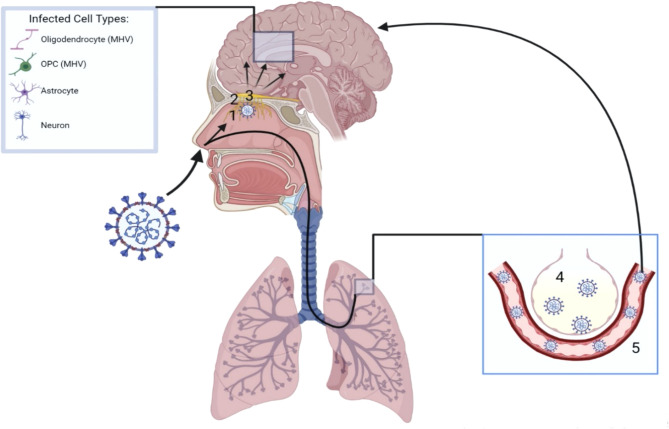Figure 1.
Neurotropism of SARS-CoV-2. Upon inhalation, SARS-CoV-2 can reach the brain parenchyma via two mechanisms. Following the olfactory route, SARS-CoV-2 infects the olfactory epithelium (1) directly under the cribiform plate (2). The virus can then traverse the cribiform plate through its foramina or via the olfactory nerves, gaining access to the olfactory bulb (3) and spreading to first and second order connections throughout the brain. Additionally, SARS-CoV-2 may be inhaled into the lungs, reach the alveoli (4) and gain access into the blood stream (5). A hematogenous route of SARS-CoV-2 neuroinvasion can then occur following breach of the BBB. Once inside the brain parenchyma, neurons and glial cells such as astrocytes have been shown to be directly infected. Oligodendrocytes and OPCs have shown similar infection with the coronavirus strain MHV.

